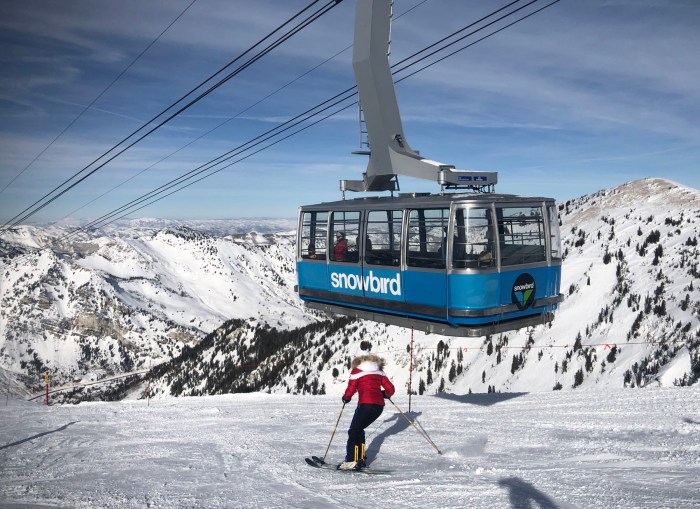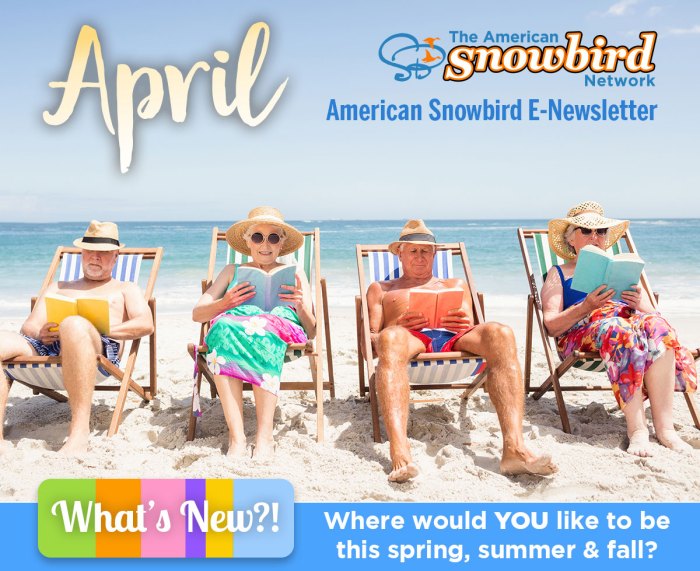Snowbird Vacations represent a significant segment of the travel industry, attracting individuals seeking extended stays in warmer climates during colder months. This comprehensive guide delves into the motivations, destinations, activities, and financial considerations involved in planning and enjoying a snowbird lifestyle, offering insights for both seasoned travelers and those considering their first snowbird adventure. From understanding the typical snowbird demographic to exploring diverse accommodation options and budgeting strategies, we aim to provide a complete picture of this increasingly popular travel trend.
The allure of snowbird vacations stems from a desire to escape harsh winters, embrace warmer climates, and engage in a variety of recreational activities. This guide examines the popular destinations, comparing their unique attributes, costs, and accessibility. We also explore the various activities available to snowbirds, from golfing and hiking to attending local festivals and enjoying community events.
Financial planning is crucial for successful snowbird vacations, and we provide guidance on budgeting, tax implications, and healthcare access in various locations. Finally, we showcase illustrative examples of snowbird experiences, capturing the sensory details and emotions of these unique journeys.
Accommodation Options for Snowbirds

Choosing the right accommodation is crucial for a successful snowbird season. The options available cater to a wide range of budgets and preferences, offering diverse living arrangements and amenities to suit individual needs. This section explores the various accommodation types, comparing their costs and benefits to help prospective snowbirds make informed decisions.
Condominiums and Apartment Rentals
Condominiums and apartment rentals represent a popular choice for snowbirds seeking a balance between comfort and convenience. These options typically offer fully furnished units with kitchen facilities, allowing for self-catering and greater flexibility. Costs vary significantly based on location, size, amenities, and the length of the rental period. High-season rates, particularly in desirable locations near amenities and recreational activities, command a premium.
For instance, a two-bedroom condo in a prime location might cost between $1,500 and $3,000 per month during peak season, while a smaller unit in a less central area could range from $800 to $1,500. Amenities often include swimming pools, fitness centers, and community spaces, enhancing the overall living experience. The benefits include a sense of community, often with organized social events, and readily available maintenance and support services.
Rental Homes
Rental homes provide a more spacious and private living experience compared to condos or apartments. They often come equipped with multiple bedrooms and bathrooms, accommodating larger groups or families. The cost of renting a home can vary greatly depending on factors such as location, size, and the inclusion of features like a private pool or yard. Expect to pay a premium for properties located close to desirable amenities or boasting luxurious features.
A three-bedroom house in a sought-after area might cost anywhere from $2,000 to $5,000 per month, or even more during peak seasons. However, the added space and privacy offer a greater sense of independence and flexibility, making them attractive to snowbirds valuing their personal space.
RV Parks and Campgrounds
RV parks and campgrounds offer a budget-friendly alternative for snowbirds traveling with their recreational vehicles. Costs vary depending on the size of the RV site, amenities offered, and the length of stay. Expect to pay anywhere from $30 to $100 per night, or potentially less with extended-stay discounts. While basic sites may offer only water and electric hookups, many parks provide full hookups (water, sewer, and electric), laundry facilities, and recreational amenities like swimming pools or clubhouses.
This option provides a more mobile and potentially less expensive living arrangement, particularly appealing to those prioritizing affordability and flexibility. However, it may lack the comforts and conveniences of more traditional accommodation options. The trade-off is a greater sense of freedom and the ability to easily relocate to different destinations throughout the snowbird season.
Financial Considerations for Snowbirds

Embracing the Snowbird lifestyle, while idyllic, necessitates careful financial planning. The extended stay in a secondary location introduces unique cost considerations beyond typical vacation budgeting, impacting housing, transportation, healthcare, and taxes. Failing to adequately address these financial implications can significantly diminish the enjoyment and long-term viability of this popular retirement or seasonal living strategy.
Housing Costs
Securing suitable housing forms a cornerstone of Snowbird finances. Costs vary dramatically depending on location, desired amenities, and lease terms. Renting a condo in a popular Florida destination might range from $1,500 to $5,000 per month, while a similar property in Arizona could fall within a different price bracket. Purchasing a second home represents a significant capital outlay, demanding a thorough assessment of mortgage affordability, property taxes, and potential maintenance expenses.
These costs must be factored into the overall budget, considering potential fluctuations in property values and the long-term financial commitment.
Transportation Expenses
Transportation costs extend beyond the initial journey to the Snowbird destination. Ongoing expenses include vehicle maintenance, fuel, insurance, and potentially public transportation fees or ride-sharing services. For those relying on personal vehicles, the cost of winterizing a vehicle prior to travel and addressing any potential maintenance needs in a new climate should be considered. If flying is preferred, frequent airfare costs must be budgeted for, along with associated fees like baggage charges and airport transfers.
Healthcare Considerations
Healthcare access and costs are crucial elements in Snowbird financial planning. Understanding insurance coverage in the chosen destination is paramount. Many individuals maintain their primary health insurance, but it’s vital to verify out-of-state coverage limitations and potential additional costs. Pre-existing conditions, the need for specialized care, and the availability of preferred healthcare providers in the Snowbird location should all inform the financial planning process.
Unexpected medical expenses can quickly escalate, highlighting the importance of comprehensive insurance and a dedicated emergency fund.
Tax Implications for Snowbirds
Tax implications for Snowbirds can be complex and vary depending on residency status and the specific states involved. Spending a significant portion of the year in a different state may trigger residency requirements, leading to tax obligations in both the primary and secondary locations. Consulting a tax professional is strongly recommended to navigate state and federal tax laws concerning property taxes, income tax, and potential deductions related to the Snowbird lifestyle.
Careful record-keeping is crucial for demonstrating residency and claiming any applicable deductions.
Budgeting Strategies for Extended Snowbird Stays
Effective budgeting is essential for managing finances during an extended Snowbird stay. Creating a detailed budget that accounts for all anticipated expenses, including housing, transportation, utilities, groceries, entertainment, and healthcare, is critical. Regularly monitoring spending and comparing it to the budget helps to identify areas for potential savings. Building an emergency fund to cover unexpected expenses is also crucial, providing a financial cushion for unforeseen circumstances.
Furthermore, exploring cost-saving strategies, such as cooking at home more frequently or utilizing free community activities, can help to stretch the budget further.
Illustrative Examples of Snowbird Experiences: Snowbird Vacations
Snowbirds, those who migrate to warmer climates for part of the year, enjoy a diverse range of experiences. Their pursuits often reflect a desire for leisure, exploration, and social engagement, shaped by the unique offerings of their chosen destinations. The following examples showcase the richness and variety of the snowbird lifestyle.
A Florida Golfing Getaway
The Florida sun warmed Mr. Henderson’s face as he stepped onto the manicured green. The air, thick with the scent of freshly cut grass and the distant aroma of citrus blossoms, was a welcome change from the biting winds of his Michigan home. The gentle sway of palm trees provided a rhythmic backdrop to the soft thud of his golf ball against the club.
Each swing was a deliberate act, a mindful release of tension, punctuated by the satisfying click of the club head against the ball. The vibrant green of the course contrasted sharply with the azure blue of the sky, creating a visually stunning panorama. The friendly banter with his golfing companions, seasoned snowbirds themselves, added to the convivial atmosphere.
The day culminated in a celebratory dinner overlooking the ocean, the sounds of the waves a soothing counterpoint to the day’s pleasant exertion. The experience wasn’t merely about golf; it was about embracing a relaxed pace of life, enjoying the natural beauty, and forging new connections.
Rocky Mountain Hiking Adventure
Ms. Rodriguez’s hike in the Colorado Rockies presented a stark contrast to her Florida golfing experience. The crisp mountain air, thin and invigorating, filled her lungs as she ascended a steep, rocky trail. The landscape was breathtaking: towering pines, jagged peaks piercing the sky, and wildflowers clinging to rocky crevices. The initial exhilaration gave way to a physical challenge as the altitude took its toll.
Each step required careful consideration, her muscles burning with the exertion. The breathtaking vistas, however, provided constant motivation. She paused frequently to drink in the panoramic views, the sheer scale of the mountains humbling and awe-inspiring. The quiet solitude of the trail, broken only by the chirping of birds and the occasional rustle of leaves, offered a profound sense of peace and rejuvenation.
Reaching the summit, the feeling of accomplishment was immense, a reward for the physical and mental effort expended. The descent was equally challenging, demanding careful footing and stamina. This experience was a testament to the transformative power of nature and the resilience of the human spirit.
A Louisiana Festival Celebration, Snowbird Vacations
The vibrant atmosphere of the New Orleans Jazz & Heritage Festival enveloped Mrs. Dubois. The air throbbed with the rhythm of live music, a kaleidoscope of sounds blending together in a captivating symphony. The aroma of Cajun and Creole cuisine filled the air, a tantalizing mix of spices and flavors. The colorful costumes and joyful expressions of the festival-goers created a vibrant tapestry of human experience.
Mrs. Dubois sampled various local delicacies, engaging in conversations with fellow attendees from all walks of life. She learned about the rich history and cultural traditions of the region, her understanding deepened by the lively interactions and shared experiences. The festival wasn’t just a spectacle; it was an immersion into a unique cultural landscape, a celebration of music, food, and community spirit.
The event offered a chance to connect with the local culture on a deeper level, creating lasting memories and a deeper appreciation for the richness of human experience.
Ultimately, the snowbird lifestyle offers a compelling blend of relaxation, recreation, and social engagement. By carefully considering the factors Artikeld in this guide – from destination selection and budget planning to healthcare access and activity choices – individuals can create fulfilling and memorable snowbird vacations. Whether seeking a vibrant social scene, a tranquil escape, or an active outdoor adventure, the possibilities are vast and cater to a diverse range of preferences.
Planning ahead and understanding the nuances of this unique travel style are key to maximizing the rewards of a snowbird adventure.

